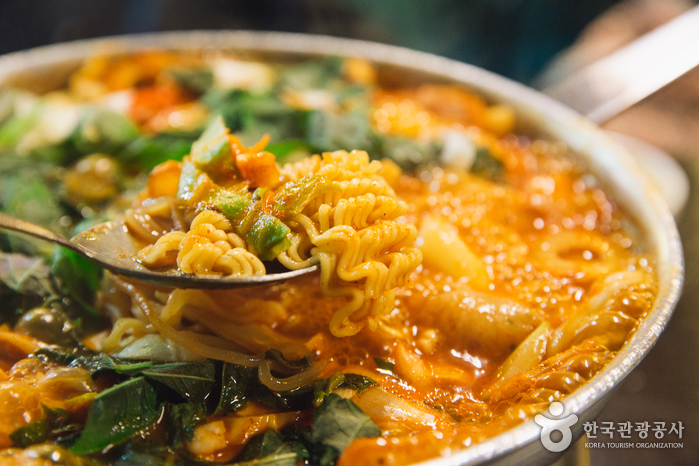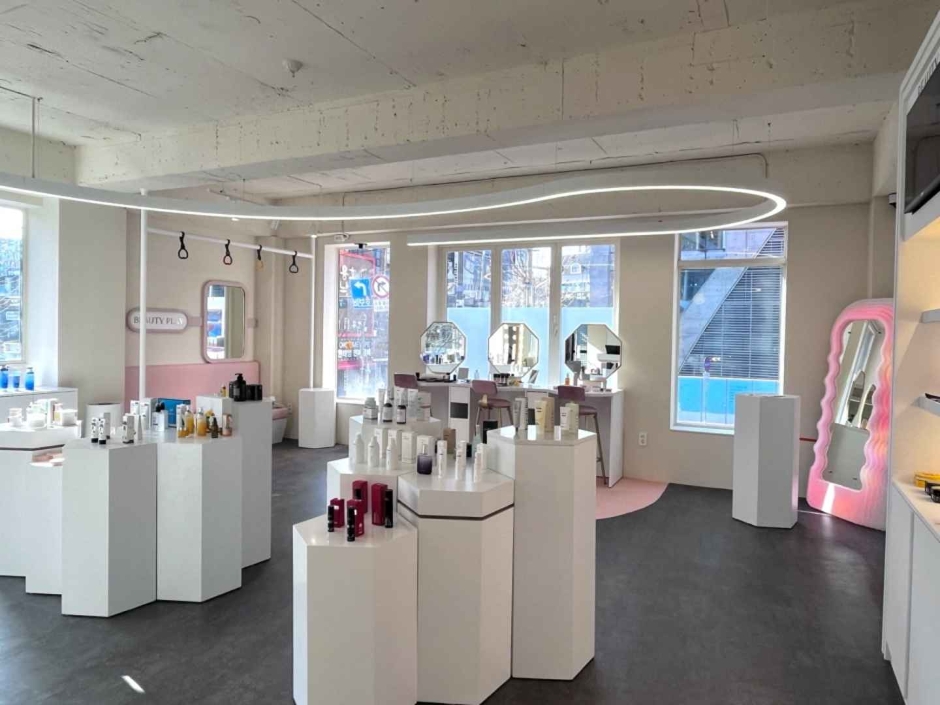Jiho Hanbang Samgyetang (Apgujeong Station) (지호한방삼계탕압구정역)
5.8Km 2024-03-18
22-11, Apgujeong-ro 28-gil, Gangnam-gu, Seoul
+82-2-518-3988
Jiho Hanbang Samgyetang serves samgyetang (ginseng chicken soup). Samgyetang (ginseng chicken soup) is a dish made by boiling chicken filled with ginseng, sweet rice, chestnuts, and dried jujube. It is often enjoyed as a pick-me-up in Korea. Other dishes include ori dak gaseumsal tteokgalbi (grilled duck breast galbi patties), buldakbal (spicy chicken feet), and cheonma ori boyangtang (nutritious duck soup with cheonma).
Olive Young - Hongdae Jungang Branch [Tax Refund Shop] (올리브영 홍대중앙)
5.8Km 2024-04-18
1F, 2F Haechan Bldg., 68, Eoulmadang-ro, Mapo-gu, Seoul
-
Ttobogetji Tteokbokki (또보겠지 떡볶이)
5.8Km 2024-03-20
34-5, Jandari-ro 6-gil, Mapo-gu, Seoul
Also referred to as “Tto-tteok,” Ttobogetji Tteokbokki is a popular tteokbokki restaurant with many branches in Seoul. Upon order, tteok (rice cake), egg, eomuk (fish cake), and three different vegetables are served together. Additional menu such as noodles, fried potatoes, and fried rice are also delectable. The butter garlic gamja twigim (butter garlic french fries) is also a must-try. The store is decorated with dolls and figurines that are pleasing the eye.
Beauty Play Hongdae (뷰티플레이 홍대점)
5.8Km 2024-06-18
16 Jandari-ro, Mapo-gu, Seoul
Beauty Play is a K-beauty experience center operated by the Korea Cosmetics Industry Institute and supported by the Ministry of Health and Welfare. It offers a wide variety of sample Korean beauty products for testing as well as diverse beauty experience programs such as makeup touch-up service (choice of base, eyes, or lips), personal color test, and skin evaluation. Visitors can also ask for product recommendation based on their skin type or skincare concerns. Beauty Play also frequently hosts beauty seminars and one-day classes, which are announced online via its official website. International tourists can apply for a full makeup service with an advance reservation free of charge.
Beauty Play has two branches in Seoul: Myeong-dong and Hongdae. Beauty Play Hongdae is located in Hongdae Street, where visitors can find recent trends, clubs, cafes and delicious foods.
Goobne Playtown (굽네 플레이타운)
5.8Km 2025-01-16
23 Jandari-ro 2-gil, Mapo-gu, Seoul
Goobne Playtown is a culture and experience center operated by Goobne, one of Korea's chicken franchises that specializes in oven-roasted chicken instead of the standard fried chicken. Visitors can taste the latest products in a relaxing space, as well as enjoy media art and changing items in the pop-up zone.
Angyeong Gongjang Gongjangjang Contact Lens [Tax Refund Shop] (안경공장공장장콘택트)
5.8Km 2024-04-22
83, Dongmak-ro, Mapo-gu, Seoul
-
Hongdae Chamsinhan Pharmacy [Tax Refund Shop] (홍대참신한약국)
5.8Km 2024-04-23
1F, 62, Eoulmadang-ro, Mapo-gu, Seoul
-
CheongKwanJang - Hongik University Station Branch [Tax Refund Shop] (정관장 홍대입구역점)
5.8Km 2024-06-26
120, Yanghwa-ro, Mapo-gu, Seoul
-
Le Labo - Garosu Branch [Tax Refund Shop] (르라보 가로수)
5.8Km 2024-04-18
1F, 28, Apgujeong-ro 10-gil, Gangnam-gu, Seoul
-



![Angyeong Gongjang Gongjangjang Contact Lens [Tax Refund Shop] (안경공장공장장콘택트)](http://tong.visitkorea.or.kr/cms/resource/46/2891246_image2_1.jpg)
![ROROMOON [Tax Refund Shop] (로로문쇼룸)](http://tong.visitkorea.or.kr/cms/resource/71/3312771_image2_1.jpg)
![Hongdae Chamsinhan Pharmacy [Tax Refund Shop] (홍대참신한약국)](http://tong.visitkorea.or.kr/cms/resource/53/2890653_image2_1.jpg)
![CheongKwanJang - Hongik University Station Branch [Tax Refund Shop] (정관장 홍대입구역점)](http://tong.visitkorea.or.kr/cms/resource/28/3313028_image2_1.jpg)
![Le Labo - Garosu Branch [Tax Refund Shop] (르라보 가로수)](http://tong.visitkorea.or.kr/cms/resource/40/2879640_image2_1.jpg)
 English
English
 한국어
한국어 日本語
日本語 中文(简体)
中文(简体) Deutsch
Deutsch Français
Français Español
Español Русский
Русский